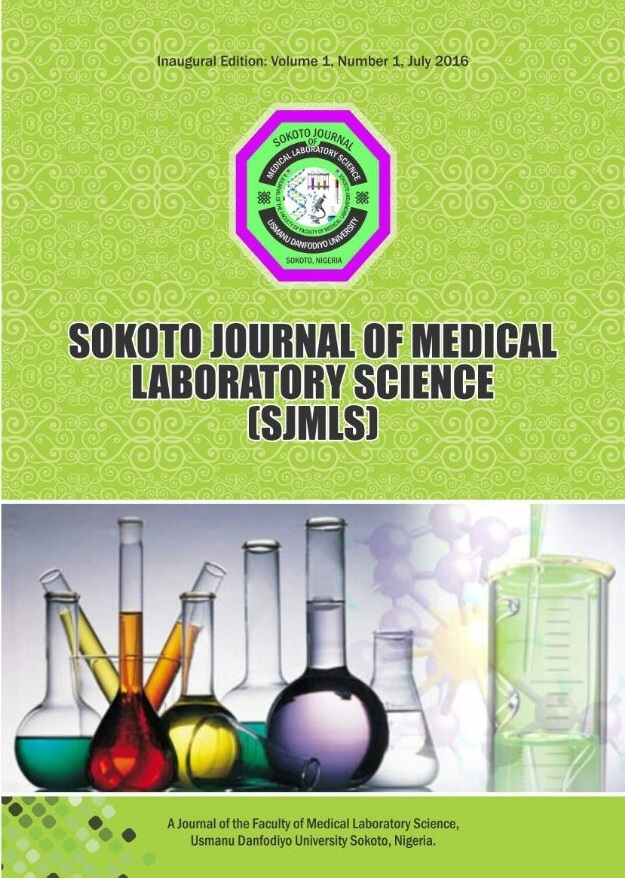Effect of Mercury on the Histopathological Architecture and Hormonal Changes on the Ovary of Wistar Rats
DOI:
https://doi.org/10.4314/sokjmls.v9i2.21Keywords:
Luteinizing hormone, Follicle stimulating hormone, Estrogen, Mercuric chlorideAbstract
The study was conducted to assess the effect of mercuric chloride (HgCl2) on the ovary and the hormonal changes associated with it. Sixteen (16) Wistar rats weighing between 180 g – 280 g and of both genders were separated randomly into 4 groups of four animals each after copulation has been confirmed. Groups B, C and D, received 4mg/kg, 6mg/kg and 8mg/kg respectively body weight of mercuric chloride solution for 28 days, while Group A was the control rats received distilled water as contained in the experimental doses. The rats were anesthetized using chloroform, dissected and blood samples for hormonal assay were collected by retro orbital process. The ovaries were removed and fixed in 10% neutral buffered formalin. They were weighed and processed for histological studies using H & E staining techniques. There was insignificant reduction (p>0.05) in weight (213.0 ±52g) when compared to the control group. There was significant reduction (p<0.05) in LH (2.3 ± 0.55mlU/ml) and FSH (0.167 ± 0.005mlU/ml) when compared to the control group. There was insignificant reduction (p>0.05) in EH (0.090 pg/mL). The histology of the ovaries reveals degenerative changes with increasing formation of fibrosis and hyalinized stroma.




